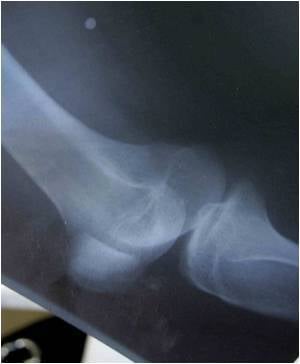
1. Tender joint count, swollen joint count (on 28 joint counts), C-reactive protein (in mg/dl), and patient global assessment scores (on a scale of zero to 10) are all less than or equal to one.
2. Simplified Disease Activity Index (which adds the scores from the four outcome measures above plus a physician global assessment to create one number between zero and about 100) score is less than or equal to 3.3.
According to the investigators, RA disease activity is generally characterized by joint swelling and tenderness and is also reflected by increased blood levels of C-reactive protein, which is a laboratory measure of inflammation. In addition, assessments by the patient and the health professional examining the patient also reflect the extent of disease activity. These measures, among others, have been thoroughly reviewed by the investigators of this study and helped them arrive at the above provisional definitions. These definitions are in line with the RA treatment goal of reversing disease activity to prevent future damage. More simplistically, once someone has essentially no signs and symptoms of the disease he or she would be considered in remission and should benefit from maximal reduction in physical disability and no progression of joint damage.
The ACR and the European League Against Rheumatism, together with the Outcome Measures in Rheumatology Initiative, jointly convened a committee to create a definition of RA remission that could be used by rheumatologists involved in clinical trials.
"As we have moved into a time of new treatment strategies for rheumatoid arthritis, remission has become an increasingly attainable goal," says David T. Felson, MD; an investigator in the study. "However, there has been no widely-used definition of remission that is stringent, but achievable, and that could be applied uniformly as an outcome measure in clinical trials. Understanding this disconnect between treatment advances and the current definition of remission—which was created in 1981 by the ACR—led our committee to focus on redefining remission so RA researchers could begin to test new definitions to see if they hold up in clinical trials."
Advertisement
"We identified a list of situations that might indicate someone is in remission. Then, we took each one of these candidate definitions of remission and examined how useful they would have been if used in existing RA trials," says Maarten Boers, MD, PhD, MSc; an investigator in the study. "Essentially, we wanted to know if a candidate definition of remission would have added value to, and successfully predicted a good outcome in, RA clinical trials."
Advertisement
"We asked six patient experts to participate in this research, as we know remission is both about the observational proof that a person is feeling and functioning better and the subsequent radiographic proof that the disease has been stopped altogether," explains Josef Smolen, MD; an investigator in the study. "By involving patient experts and respective tests, we have successfully married these two concepts together in the preliminary definitions. Do the physical exams and lab tests indicate remission; does the patient's assessment indicate remission? These are two very important questions, and both play a role in the redefinition of RA remission."
After reviewing how each candidate definition would work in existing RA trials, and determining how a patient's assessment of overall health and pain levels would play a role in remission definitions, the committee determined that—at any point in time—an RA patient must satisfy one of the two preliminary definitions to be considered in remission.
"In a trial, one of these definitions should be chosen in advance and then if a patient in the trial meets it, he or she would be considered in remission, explains Dr. Felson. "Our next steps will be to evaluate how useful and accurate these definitions are when incorporated into clinical practice. As in trials, remission has become a reasonable goal for patients undergoing treatment in practice too."
Rheumatoid arthritis is a chronic disease that causes pain, stiffness, swelling, and limitation in the motion and function of multiple joints. Though joints are the principal body parts affected by RA, inflammation can develop in the organs as well. An estimated 1.3 million Americans have RA, and the disease typically affects women twice as often as men.
Source-Eurekalert













